Byeong-Hoo Lee
Sample Dominance Aware Framework via Non-Parametric Estimation for Spontaneous Brain-Computer Interface
Nov 15, 2023Abstract:Deep learning has shown promise in decoding brain signals, such as electroencephalogram (EEG), in the field of brain-computer interfaces (BCIs). However, the non-stationary characteristics of EEG signals pose challenges for training neural networks to acquire appropriate knowledge. Inconsistent EEG signals resulting from these non-stationary characteristics can lead to poor performance. Therefore, it is crucial to investigate and address sample inconsistency to ensure robust performance in spontaneous BCIs. In this study, we introduce the concept of sample dominance as a measure of EEG signal inconsistency and propose a method to modulate its effect on network training. We present a two-stage dominance score estimation technique that compensates for performance degradation caused by sample inconsistencies. Our proposed method utilizes non-parametric estimation to infer sample inconsistency and assigns each sample a dominance score. This score is then aggregated with the loss function during training to modulate the impact of sample inconsistency. Furthermore, we design a curriculum learning approach that gradually increases the influence of inconsistent signals during training to improve overall performance. We evaluate our proposed method using public spontaneous BCI dataset. The experimental results confirm that our findings highlight the importance of addressing sample dominance for achieving robust performance in spontaneous BCIs.
Hybrid Paradigm-based Brain-Computer Interface for Robotic Arm Control
Dec 14, 2022Abstract:Brain-computer interface (BCI) uses brain signals to communicate with external devices without actual control. Particularly, BCI is one of the interfaces for controlling the robotic arm. In this study, we propose a knowledge distillation-based framework to manipulate robotic arm through hybrid paradigm induced EEG signals for practical use. The teacher model is designed to decode input data hierarchically and transfer knowledge to student model. To this end, soft labels and distillation loss functions are applied to the student model training. According to experimental results, student model achieved the best performance among the singular architecture-based methods. It is confirmed that using hierarchical models and knowledge distillation, the performance of a simple architecture can be improved. Since it is uncertain what knowledge is transferred, it is important to clarify this part in future studies.
Target-centered Subject Transfer Framework for EEG Data Augmentation
Nov 24, 2022Abstract:Data augmentation approaches are widely explored for the enhancement of decoding electroencephalogram signals. In subject-independent brain-computer interface system, domain adaption and generalization are utilized to shift source subjects' data distribution to match the target subject as an augmentation. However, previous works either introduce noises (e.g., by noise addition or generation with random noises) or modify target data, thus, cannot well depict the target data distribution and hinder further analysis. In this paper, we propose a target-centered subject transfer framework as a data augmentation approach. A subset of source data is first constructed to maximize the source-target relevance. Then, the generative model is applied to transfer the data to target domain. The proposed framework enriches the explainability of target domain by adding extra real data, instead of noises. It shows superior performance compared with other data augmentation methods. Extensive experiments are conducted to verify the effectiveness and robustness of our approach as a prosperous tool for further research.
Factorization Approach for Sparse Spatio-Temporal Brain-Computer Interface
Jun 17, 2022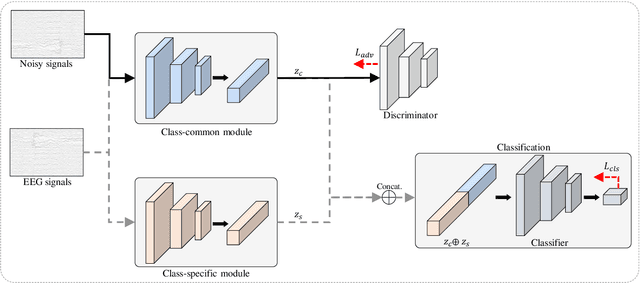
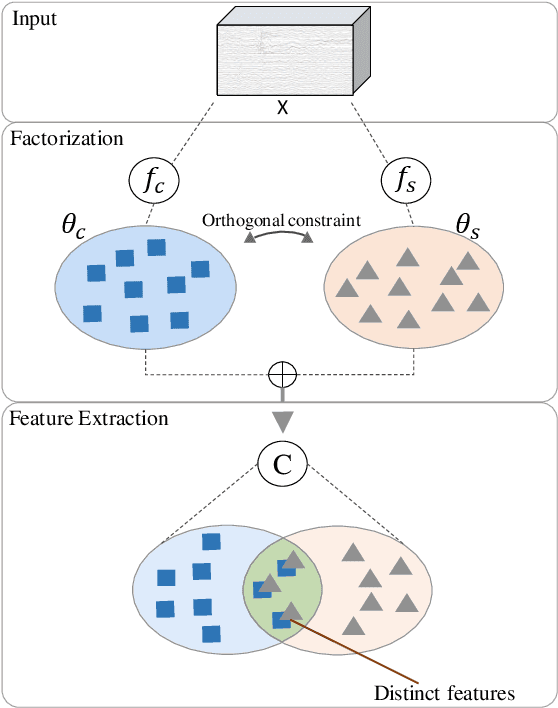
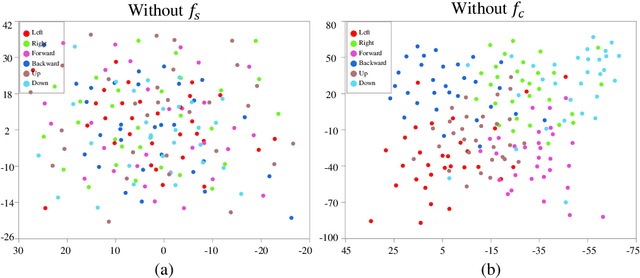

Abstract:Recently, advanced technologies have unlimited potential in solving various problems with a large amount of data. However, these technologies have yet to show competitive performance in brain-computer interfaces (BCIs) which deal with brain signals. Basically, brain signals are difficult to collect in large quantities, in particular, the amount of information would be sparse in spontaneous BCIs. In addition, we conjecture that high spatial and temporal similarities between tasks increase the prediction difficulty. We define this problem as sparse condition. To solve this, a factorization approach is introduced to allow the model to obtain distinct representations from latent space. To this end, we propose two feature extractors: A class-common module is trained through adversarial learning acting as a generator; Class-specific module utilizes loss function generated from classification so that features are extracted with traditional methods. To minimize the latent space shared by the class-common and class-specific features, the model is trained under orthogonal constraint. As a result, EEG signals are factorized into two separate latent spaces. Evaluations were conducted on a single-arm motor imagery dataset. From the results, we demonstrated that factorizing the EEG signal allows the model to extract rich and decisive features under sparse condition.
A Factorization Approach for Motor Imagery Classification
Dec 13, 2021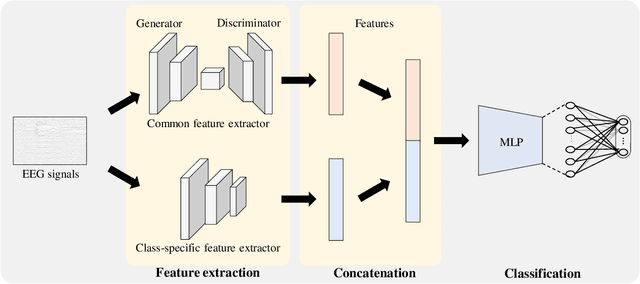

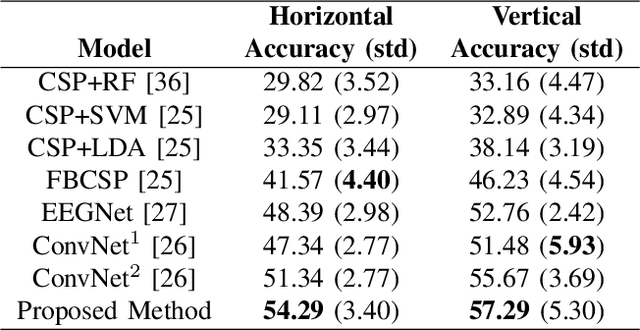
Abstract:Brain-computer interface uses brain signals to communicate with external devices without actual control. Many studies have been conducted to classify motor imagery based on machine learning. However, classifying imagery data with sparse spatial characteristics, such as single-arm motor imagery, remains a challenge. In this paper, we proposed a method to factorize EEG signals into two groups to classify motor imagery even if spatial features are sparse. Based on adversarial learning, we focused on extracting common features of EEG signals which are robust to noise and extracting only signal features. In addition, class-specific features were extracted which are specialized for class classification. Finally, the proposed method classifies the classes by representing the features of the two groups as one embedding space. Through experiments, we confirmed the feasibility that extracting features into two groups is advantageous for datasets that contain sparse spatial features.
Classification of High-Dimensional Motor Imagery Tasks based on An End-to-end role assigned convolutional neural network
Feb 04, 2020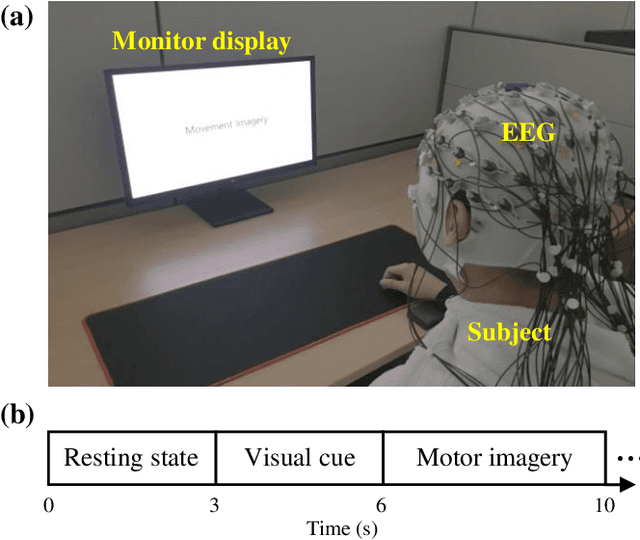
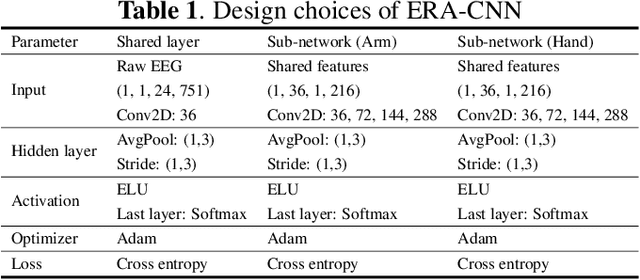
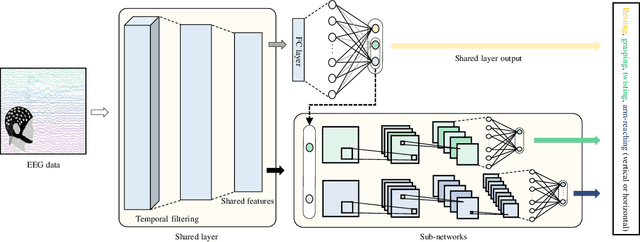
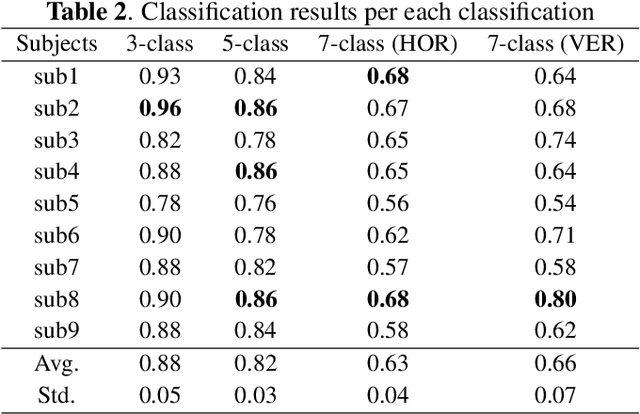
Abstract:A brain-computer interface (BCI) provides a direct communication pathway between user and external devices. Electroencephalogram (EEG) motor imagery (MI) paradigm is widely used in non-invasive BCI to obtain encoded signals contained user intention of movement execution. However, EEG has intricate and non-stationary properties resulting in insufficient decoding performance. By imagining numerous movements of a single-arm, decoding performance can be improved without artificial command matching. In this study, we collected intuitive EEG data contained the nine different types of movements of a single-arm from 9 subjects. We propose an end-to-end role assigned convolutional neural network (ERA-CNN) which considers discriminative features of each upper limb region by adopting the principle of a hierarchical CNN architecture. The proposed model outperforms previous methods on 3-class, 5-class and two different types of 7-class classification tasks. Hence, we demonstrate the possibility of decoding user intention by using only EEG signals with robust performance using an ERA-CNN.
Motor Imagery Classification of Single-Arm Tasks Using Convolutional Neural Network based on Feature Refining
Feb 04, 2020
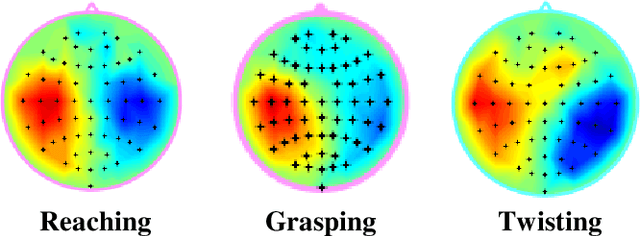

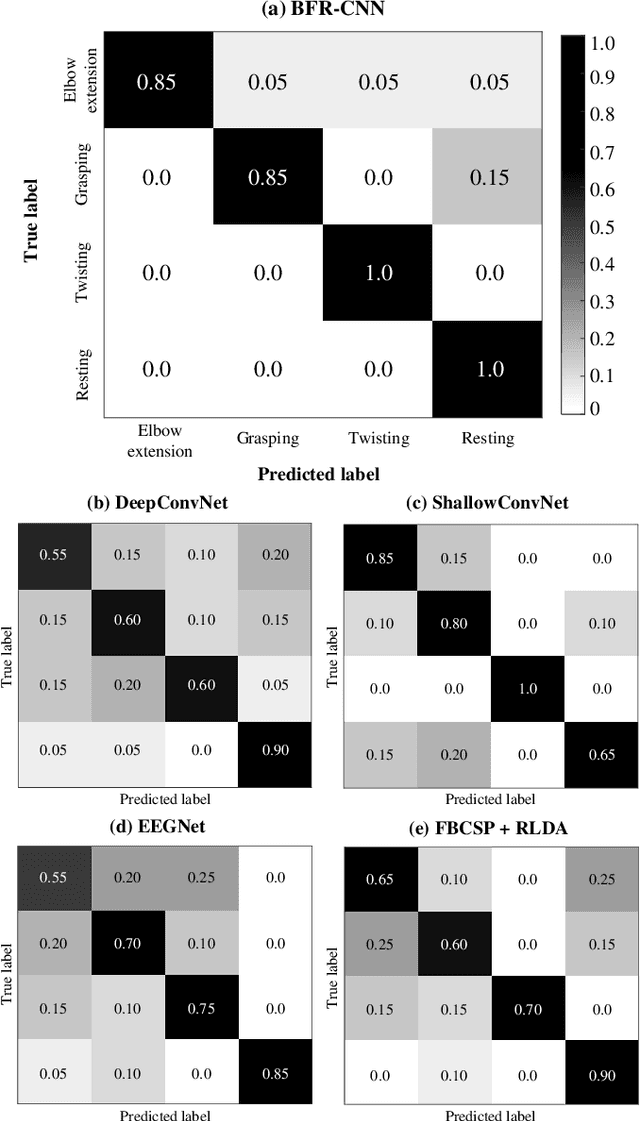
Abstract:Brain-computer interface (BCI) decodes brain signals to understand user intention and status. Because of its simple and safe data acquisition process, electroencephalogram (EEG) is commonly used in non-invasive BCI. One of EEG paradigms, motor imagery (MI) is commonly used for recovery or rehabilitation of motor functions due to its signal origin. However, the EEG signals are an oscillatory and non-stationary signal that makes it difficult to collect and classify MI accurately. In this study, we proposed a band-power feature refining convolutional neural network (BFR-CNN) which is composed of two convolution blocks to achieve high classification accuracy. We collected EEG signals to create MI dataset contained the movement imagination of a single-arm. The proposed model outperforms conventional approaches in 4-class MI tasks classification. Hence, we demonstrate that the decoding of user intention is possible by using only EEG signals with robust performance using BFR-CNN.
 Add to Chrome
Add to Chrome Add to Firefox
Add to Firefox Add to Edge
Add to Edge